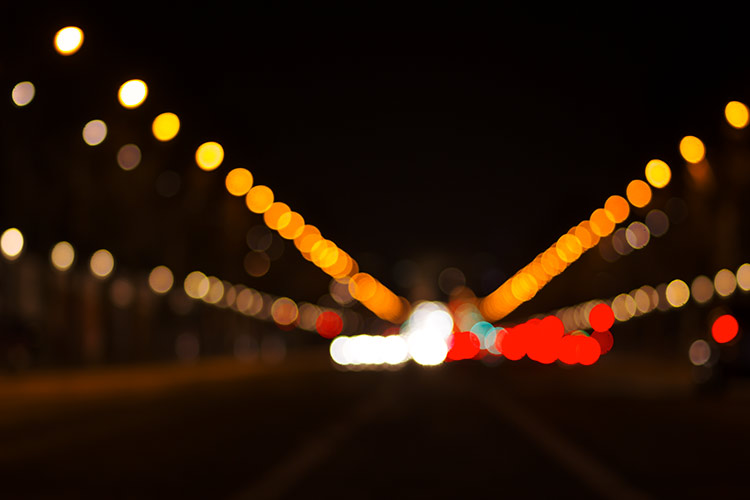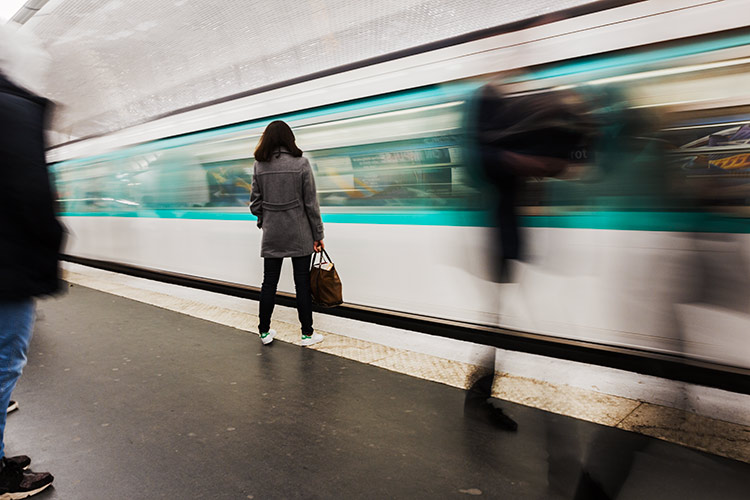We may earn a commission when you purchase through affiliate links. Learn more.
If you’ve ever picked up a camera before, you probably know just how frustrating it is to find out you’ve taken blurry photos when you upload them later! In order to figure out how we can fix this and never end up taking blurry photos again, let’s look at just what causes blurry photos to begin with. Interestingly, there are a few factors at play here:
1. First, you’ve got blur caused by your subject being out of focus.
2. Second, you’ve got blur caused by your subject being in motion.
3. Third, you’ve got blur caused by your own movements (or by external forces like the wind) while holding the camera.
Alright — now we know what causes blurry photos, so lets get down to the task of ensuring that we can prevent blurry photos from happening to begin with.
What is Out of Focus Blur?
One of the biggest causes of blurry photos is that the shots are simply out of focus. This can happen for a number of reasons, including the camera’s autofocus system incorrectly identifying your subject and locking focus onto the wrong area.
For example, let’s say you’re trying to take a picture of a tiny spider sitting in its web in front of a doorway. Your camera’s autofocus system might miss the spider entirely and simply lock focus on the door behind it, and if you don’t review your photo after taking it you might not realize until you get home.
Another cause of out of focus blur is your subject being outside the field of focus. The kind of shallow depth of field you can achieve with a wide open aperture like f/1.8 can make for beautiful photos, but when photographing very close subjects with wide apertures it can be tricky to get your subject perfectly in focus, especially if you’re relying on the camera’s autofocus system. If your subject is moving at all, a shallow depth of field can make getting your subject in sharp focus especially tricky.
For example, maybe you’re trying to take a photo of a beautiful flower. Your aperture is set to f/1.8 to help isolate the flower from the rest of the scene for a better visual effect, but your camera keeps locking the focus onto the edge of the flower petal, rather than the center. If it’s a windy day, you might find that many of your photos end up blurry, as the flower sways in all directions, in and out of the field of focus. Another common scenario is with portrait photography — it’s usually a good idea to have the person’s eyes in focus, but sometimes your camera will focus on other areas like your subject’s nose, or maybe the shiny gold necklace they’re wearing, leaving the rest of their face blurry.
Now that we’ve identified some of the causes of out of focus blur, we’re better equipped to prevent it from happening.
How to prevent Out of Focus blurring:
1. Select a Single Autofocus Point
Cameras have gotten pretty smart, but they can’t yet read your mind. You can help your camera’s focusing system out by selecting a single AF (autofocus) point and carefully locking the focus on that point before taking your shot. This way your camera won’t need to search the entire scene to figure out what needs to be in focus. Even most modern smart phones allow you to pre-focus on a specific area of your scene, and you’ll find that it can really improve the sharpness in your photos.
2. Use Manual Focus
There are times when digital cameras simply aren’t up to the challenge of focusing correctly. Autofocus sensors require light and contrast to function, so if you’re trying to take pictures in very low light or if there’s not much contrast between your subject and the background, using manual focus to take control is often a good idea. You’ll also find manual focus to be the method of choice when shooting close up macro photos, especially when using a wider aperture. This allows you to move the camera slowly forward until you have your subject perfectly in focus.
3. Use Live View and a Tripod
To really fine tune the focus, try using live view on the camera’s LCD screen in conjunction with manual focus and a tripod. Live view allows you to digitally zoom in on the image to carefully adjust the focus, and because the LCD screen is so much larger than a viewfinder, it’s much easier to obtain very accurate focusing results so that your subject is in perfect focus.
What is Motion Blur?
Modern photography is all about letting light reach your camera’s digital sensor for a specific amount of time, and we regulate this time by adjusting the shutter speed, which determines how long the sensor is exposed to light for. By keeping the shutter open for longer we can emphasize and capture movement in a scene, and by keeping it open for a shorter time we can freeze the appearance of movement. Shutter speed is measured in seconds and fractions of a second, so something like 1/125 means that the shutter is open for 1/125th of a second.
For example, if you’re trying to photograph your dog running at full speed across the yard, but you’re using a shutter speed of just 1/40, your dog will appear blurry. Let’s say your dog is running at 15mph, which is equal to 22 feet per second. If your shutter speed is 1/40th of a second, that means that during this time your dog has moved 6 and a half inches, meaning that there’s no way he’ll be in sharp focus.
How to prevent Motion Blur:
1. Use the Appropriate Shutter Speed to Freeze Action
In order to freeze the movement of a subject, you’ll need to use a shutter speed that’s fast enough to prevent motion blur. Which shutter speed to use will depend entirely upon both the speed of your subject and the focal length of the lens you’re using. To use the example of the running dog again, if you’re using an ultra-wide angle lens like the Sigma 10-20mm f/3.5 EX DC HSM ELD SLD to photograph the scene, the dog will take up much less of the shot than if you’re using a 200mm lens, which might allow you to fill the frame with the dog.
Just like it’s easier to perceive movement in cars right in front of us, vs cars we see in the distance, the more of your photo the subject takes up, the more apparent any motion blur will be. If we use a shutter speed of 1/500th of a second to take a picture of that same dog running at 15mph, during that brief time the shutter is open, the dog will have moved forward by half an inch. With a longer 200mm lens, we might end up with a shot that looks a little blurry, but with most shorter lenses like a Canon EF-S 18-55mm IS STM that often comes bundled with many cameras like the Canon T6i, the dog should appear very sharp, without any obvious motion blur.
2. Use a Flash
The duration of a camera flash is far shorter than any shutter speed you can use with your camera, so using a flash to freeze nearby action is one of the best ways to prevent motion blur. Even though you’ll always see flashes going off at virtually every event you go to, they won’t help freeze distant action, but for closer shots of subjects like children playing and pets running around, using your camera flash can help to prevent motion blur.
 What is Camera Shake Blur?
What is Camera Shake Blur?
A less obvious cause of blurry photos is camera shake — tiny movements that shake your camera and result in blurred shots. One of the main culprits of camera shake is your own hands — even when we try our hardest, photographers just can’t be as motionless as a statue. Even if it seems like you’re holding your camera perfectly still, every breath you take, every pulse of blood your heart pumps through your body, every tiny muscle movement all shakes your camera ever so slightly. When using faster shutter speeds, this camera shake can be counteracted, but at slower shutter speeds it can cause very blurry photos. Besides your own movement, camera shake can be caused by other factors too, like the wind and even the vibrations caused by riding in a vehicle.
For example, if you’re trying to take pictures of a famous landmark while you’re walking slowly past, your own movement is going to shake your camera. If you’re using a shutter speed under about 1/250, there’s a good chance that you might end up with blurry photos as a result of your own motion. Even if you’re standing still, your hands will still shake the camera.
When using longer focal lengths, camera shake can become especially problematic. If you’re using a long focal length like a 400mm lens to take a photo of a bird sitting in a tree a few hundred feet away, a tiny movement of just a few millimeters can be enough to move your subject out of the center of the frame.
How to prevent Camera Shake blurring:
1. Use a minimum shutter speed for every focal length
A good guideline when handholding your camera is to always use a shutter speed that is at least the same or faster as the focal length of your lens. For instance, if you’re shooting with a 50mm lens, you’d want to use a shutter speed of at least 1/50 in order to avoid blurring due to camera shake. With a 300mm lens, you’d want to use 1/320 as a base shutter speed. If your hands tend to shake a bit in general, you’ll want to set your minimum shutter speed even more conservatively, to ensure sharp photos.
2. Use a Tripod to Stabilize your Camera
Sometimes handholding your camera just isn’t the practical solution, and using a tripod becomes the best option to stabilize your camera. Using a tripod provides your camera with stable support and is one of the easiest ways to eliminate camera shake. When using a tripod to photograph stationary subjects, you’ll be able to use shutter speeds much slower than you could if you were handholding your camera. Tripods are incredibly helpful, but you can still end up with blur caused by camera shake when using a tripod if you’re not careful — when triggering the photo by pressing the shutter, you can introduce enough movement to result in very blurry photos. The fix for this is simple — make use of a remote or a shutter release cable! If you don’t have one, another option is to set a short self-timer, so that the camera has a few seconds to become completely motionless again before taking the shot.
For more tips, check out our guide to 8 Tips for Getting Sharp Photos with a Tripod
3. Use Image Stabilization
Many newer cameras and lenses make use of image stabilization technology, which can provide about 2 to 5 stops of compensation for camera shake. What this means is that with a lens like the Nikon AF-S DX NIKKOR 18-55mm F/3.5-5.6 G VR II which offers up to 4 stops of vibration reduction, a photographer might be able to capture a crisp shot at 1/15th whereas without vibration reduction enabled, they might need to use a shutter speed of 1/125th to ensure a sharp photo.
While image stabilization is most frequently found on lenses, more digital cameras like the Pentax K-1 and Sony A7 II now feature built in image stabilization, allowing even older manual-focus lenses used on these camera bodies to benefit. For capturing crisp photos in low light without using a flash, image stabilization can be a major help, but one area where it can’t help is if your subject is moving — you’ll need to use one of the other tactics to prevent motion blur!
4. Take Multiple Shots
When handholding your camera, try taking several images in a row of the same scene. You’ll likely find that one of the shots is sharper than the others, even when the settings are the same for all of them.


 What is Camera Shake Blur?
What is Camera Shake Blur?